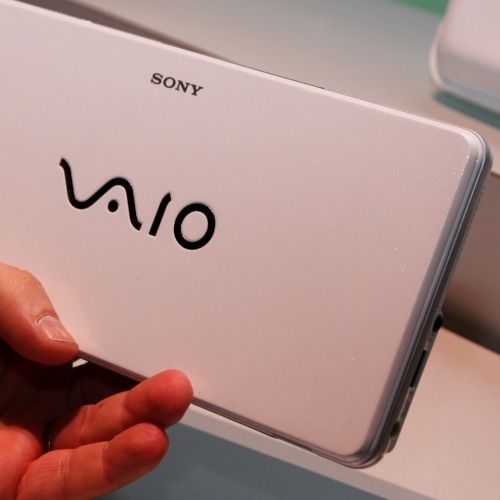The boom in netbooks over the past year has seen nearly every laptop manufacturer release at least one model, with Sony and Apple the two noteable exceptions. Instead, Sony has produced the P-series - a netbook-sized, Intel Atom powered, highly portable device the Japanese company resolutely refuses to call a netbook.
Our quick take
The P-series is a truly unique device, offering the ultimate in portability, but whether that’s enough is difficult to say. For a start, the combination of Windows Vista and a single-core 1.33GHz processor is a poor choice, and the little Sony simply isn’t fast enough to run it convincingly.
The P has also arrived at a bad time, with the laptop market awash with similarly specified netbooks costing half or, in some cases, a quarter of the price. In its favour, the 8-inch screen is simply stunning, and far better than anything available in the netbook market. It’s also half the weight of many of its perceived rivals, yet remaining a usable prospect for daily use.
Whether this is enough to separate the P-series from netbooks, as Sony hopes, remains to be seen, but for now the specification is too compromised to attract that sort of price premium.

Sony Vaio VGN-P11Z/W notebook - 3.5 / 5
| FOR | AGAINST |
|---|---|
|
|
Most noticeable is just how tiny the thing is, with an 8-inch screen and weight of just over 620g, it’s comfortably smaller than any netbook. At 20mm in depth, it’s also a lot thinner than most, and feels more like a lightweight paper diary in the hand.
The screen features an absurdly wide aspect ratio, with more in common with Psions of yesteryear than a laptop or netbook. Turn on the P-series, and you’ll notice it’s even more unusual than it first appears, featuring an amazingly sharp 1600 x 900 pixel resolution.
With crystal clear image quality, it’s fantastic for playing films. That said, we had to turn off Vista’s Aero effects in order to get the best out of it - with everything turned up to the max we found movie playback suffered, with the Atom processor struggling to run films at full frame rates.
At this size, it’s also fair to say some users will find the resolution simply too high - icons and text are tiny, and while there’s space for fitting multiple windows onscreen, for many people it simply won’t be comfortable.
Perhaps the most surprising aspect of this machine, considering its tiny dimensions, is just how usable it remains. The keyboard is the best aspect, with usability that doesn’t fall a long way short of Sony’s regular VAIO laptops.
You’ll find the same isolated key design, with each key poking out of its own hole in the chassis, and the decent spacing meant we had no trouble at all typing at speed. The small chassis does result in a shallow keystroke, however, which may bother some users.
With its odd ultra-wide display, there’s very little space in front of the keyboard, so instead of a touchpad you’ll find a pointing nipple between the G, H and B keys. It takes some getting used to, and some users will no doubt prefer an external mouse, but it’s a reasonable enough solution for navigating the OS and carrying out simple tasks.
The touchpad buttons are slightly more problematic, perched on the very front of the chassis. Using them is a slightly fiddly procedure, but again it’s something we found ourselves adjusting to, and didn’t prove too troublesome once up and running.
Perhaps a strange choice for a machine at this price point, and inviting comparisons with the current crop of netbooks, the P11Z/W uses an Intel Atom processor. Even more surprising is the fact it’s the Z520 chip - running at 1.33GHz - rather than the 1.66GHz chips found in many of the latest netbooks.
The 60GB hard drive is limited, although the range-topping model - at a whopping £1369 - comes with a 128GB SSD. It also comes with a 1.6GHz Atom processor and an extended battery - providing a claimed 5 hours additional use, although we don’t know what this adds to the P’s weight.
With 2048MB of memory and Windows Vista to push along, performance is inevitably stunted. It’s fine once up and running - as long as you’re seeking a machine for word processing, internet browsing and the like. Ask anything more, such as multi-tasking abilities, carrying out Photoshop tasks while running virus scans, and the system slows to a crawl.
Battery life, at around 3 hours, is enough for shorter commutes, but anything longer and you’ll have to take the power adapter with you. At least it’s a swappable unit, and the power adapter is also one of the smallest we’ve seen, making it easy to slip into a bag alongside the P.
It’s a limited device when it comes to ports, but it’s still better equipped than portables like the Apple MacBook Air. The two USB ports are sensibly placed on either side of the chassis, so you’ll be able to add two bulky peripherals simultaneously, and on the front you’ll find card readers for SD and Sony’s Memory stick.
There’s no space for a full-on display adapter, with the screen opening down behind the chassis, so instead you’ll find a proprietary port, and an accompanying mini docking station. In reality, the dock is an adapter with an Ethernet port and a VGA-out, offering networking and the ability to hook up a monitor. Wireless connectivity is good, with both 3G/HSDPA and Wi-Fi provided.
To recap
The P-series is a surprisingly usable proposition, and built-in 3G makes it a great out of office tool, but it costs a lot for what’s on offer
